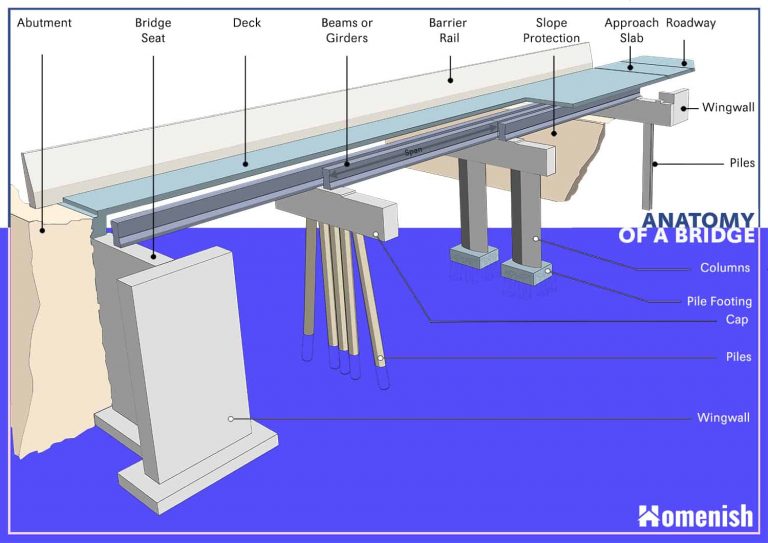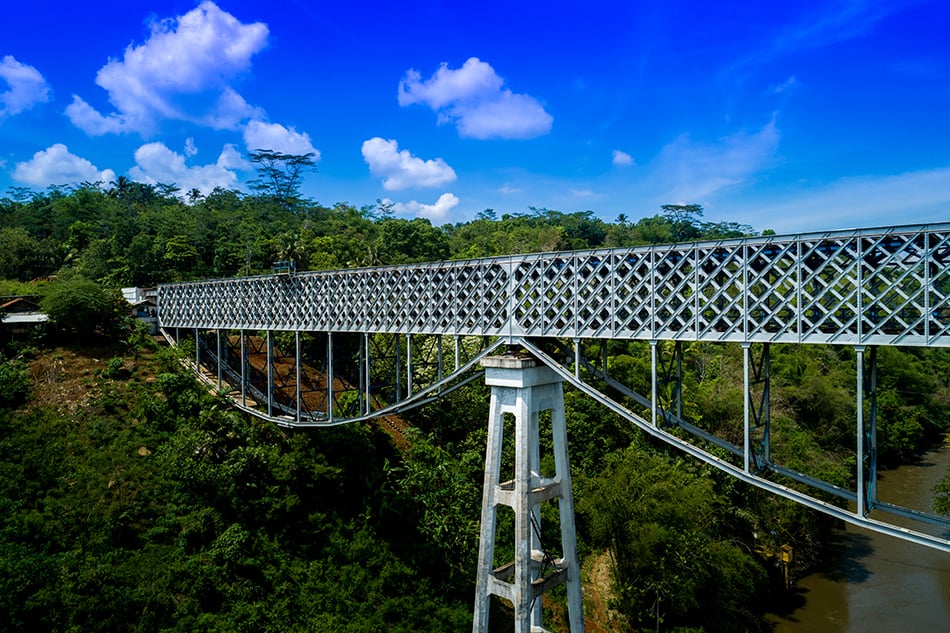When it comes to bridges, there are many different parts that make up the structure. Some of these parts are pretty obvious, while others might be a bit more obscure. In this article, we're going to explore some of the most important parts of a bridge, each with a name that consists of exactly five letters!
Span

One of the most fundamental parts of a bridge is the span. This is the distance between two supports, such as columns or piers. The span is what allows the bridge to cross over a body of water or a valley, and it can vary in length depending on the design of the bridge.
Deck
The deck is the surface of the bridge that cars, trucks, and pedestrians travel on. It's usually made of concrete or steel, and it needs to be strong enough to support the weight of the vehicles and people who use the bridge.
Piers

Piers are the vertical supports that hold up the deck of the bridge. They're usually made of concrete or steel, and they need to be able to withstand the weight of the deck and the vehicles and people that use the bridge.
Abutment

An abutment is a structure that supports the ends of the bridge and connects it to the land. Abutments are usually made of concrete or masonry, and they need to be strong enough to keep the bridge stable and prevent it from collapsing.
Steel

Steel is a material that's commonly used in bridge construction because it's strong and durable. Many bridges are made almost entirely of steel, including the Golden Gate Bridge in San Francisco and the Brooklyn Bridge in New York City.
Arch

An arch is a curved structure that's used to support the weight of the bridge. Arches are often used in bridge construction because they distribute the weight of the bridge evenly and can be very strong.
Cable

Cables are often used in suspension bridges to support the weight of the deck. These cables are usually made of steel and are connected to tall towers on either side of the bridge.
Tower
Towers are tall structures that are used to support the cables of a suspension bridge. These towers need to be strong enough to hold the weight of the cables and the deck of the bridge, and they're often designed to be visually striking.
River

The river is the body of water that the bridge crosses over. Rivers can vary in size, and bridges that cross over large rivers need to be designed to withstand strong currents and other environmental factors.
Steel

Steel is a material that's commonly used in bridge construction because it's strong and durable. Many bridges are made almost entirely of steel, including the Golden Gate Bridge in San Francisco and the Brooklyn Bridge in New York City.
Joint

A joint is a connection between two pieces of the bridge that allows them to move independently. Joints are important in bridge construction because they allow the bridge to expand and contract as temperatures change without causing damage to the structure.
Deck

The deck is the surface of the bridge that cars, trucks, and pedestrians travel on. It's usually made of concrete or steel, and it needs to be strong enough to support the weight of the vehicles and people who use the bridge.
Steel
Steel is a material that's commonly used in bridge construction because it's strong and durable. Many bridges are made almost entirely of steel, including the Golden Gate Bridge in San Francisco and the Brooklyn Bridge in New York City.
Beam

A beam is a long, horizontal structure that's used to support the weight of the bridge. Beams are often made of steel or concrete, and they need to be strong enough to hold up the deck of the bridge and the weight of the vehicles and people that use it.
Truss

A truss is a structure that's made up of a series of interconnected triangles. Trusses are often used in bridge construction because they're very strong and can be used to span long distances without needing a lot of vertical supports.
Steel

Steel is a material that's commonly used in bridge construction because it's strong and durable. Many bridges are made almost entirely of steel, including the Golden Gate Bridge in San Francisco and the Brooklyn Bridge in New York City.
Deck

The deck is the surface of the bridge that cars, trucks, and pedestrians travel on. It's usually made of concrete or steel, and it needs to be strong enough to support the weight of the vehicles and people who use the bridge.
Abutment

An abutment is a structure that supports the ends of the bridge and connects it to the land. Abutments are usually made of concrete or masonry, and they need to be strong enough to keep the bridge stable and prevent it from collapsing.
Steel

Steel is a material that's commonly used in bridge construction because it's strong and durable. Many bridges are made almost entirely of steel, including the Golden Gate Bridge in San Francisco and the Brooklyn Bridge in New York City.
Deck
The deck is the surface of the bridge that cars, trucks, and pedestrians travel on. It's usually made of concrete or steel, and it needs to be strong enough to support the weight of the vehicles and people who use the bridge.
Steel
Steel is a material that's commonly used in bridge construction because it's strong and durable. Many bridges are made almost entirely of steel, including the Golden Gate Bridge in San Francisco and the Brooklyn Bridge in New York City.
Deck

The deck is the surface of the bridge that cars, trucks, and pedestrians travel on. It's usually made of concrete or steel, and it needs to be strong enough to support the weight of the vehicles and people who use the bridge.
Steel

Steel is a material that's commonly used in bridge construction because it's strong and durable. Many bridges are made almost entirely of steel, including the Golden Gate Bridge in San Francisco and the Brooklyn Bridge in New York City.
Conclusion
As you can see, there are many different parts that make up a bridge, each with its own unique name consisting of exactly five letters. Whether it's the span, deck, piers, or any of the other parts we've discussed, each plays an important role in ensuring that the bridge is strong, stable, and capable of carrying the weight of the vehicles and people that use it. By understanding these parts, we can appreciate the engineering marvels that bridges truly are, and the incredible feats of human ingenuity that have made them possible.